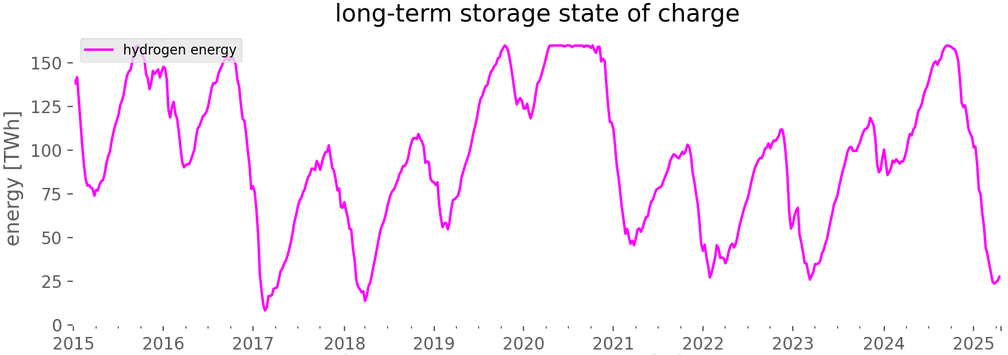model.energy/future: Challenging Winter 2024/5
First Posted: 2025.04.23, Last Revised: 2025.04.23, Author: Tom Brown
This past winter 2024/5 would have been challenging for a renewable system in Germany, due to a row of dark wind lulls (Dunkelflauten), combined with colder weather. You can see that the plunge in hydrogen storage in our live simulation is as bad as the winter 2016/7. But we got through it fine, and seem to have now turned the corner: the heating season is over and the storage is filling up again with all that solar energy.

The repeated usage of hydrogen to fill the gaps between wind and solar generation can be seen in the weekly averages of the supply (all the red bits).

See here for the full simulations results:
https://model.energy/future/html/newdemand.html
This simulation uses today's weather and scales it up to a scenario of future capacities, including for new demands like electric vehicles and heat pumps.
In reality we would not cover all these gaps with hydrogen, this is an extreme toy model.
This simulation assumes islanded operation for Germany, and ignores the significant role imports and exports with Germany's neighbours can play balancing the system, thus reducing the need for hydrogen storage.
We've also restricted the technology choice, and there's a whole plethora of technologies that could step up: other storage media like methanol that are easy to bunker for 1-in-10-year events, biofuels, gas with carbon capture or even unabated gas whose emissions are compensated elsewhere, or other advanced dispatchables, see here for more discussion of the options:
Blog post: Options for Dunkelflaute
The point is rather to showcase challenges and at least one set of solutions (among many).
There's more info on the assumptions here: